Post by lars on Sept 7, 2017 19:45:35 GMT
So now I'll start the next project. It's a mandolin which share many features with the newly completed tenor mandola - same body shape, same materials and very similar design principles. But just like I stole a lot of ideas from you guys in that project I will continue to ravage and pillage like a true viking. This time I've been inspired by R the F-s experiments with Howe-Ormish design.
But I did my own research and found that many of these ideas with cylindrical tops, floating buttresses etc were partly invented by swedes emigrating to the USA at the end of the 19th century like the Larson brothers and the Vega founders. So I hope we can all agree that I'm just reclaiming my heritage :-)
"Double-S" is just my word for the "bulge" or "hump" that were on the Howe-Orme and early Vega guitars (and on R the F-s guitars of course). Traditionally they've been called "cylindrical" tops, but that's a strange thing to call it. My tenor mandola and many other instruments are true cylinder tops as they have a profile that is a part of a circle's circumference. But here we have a profile that is more like a double s-curve, hence the name.

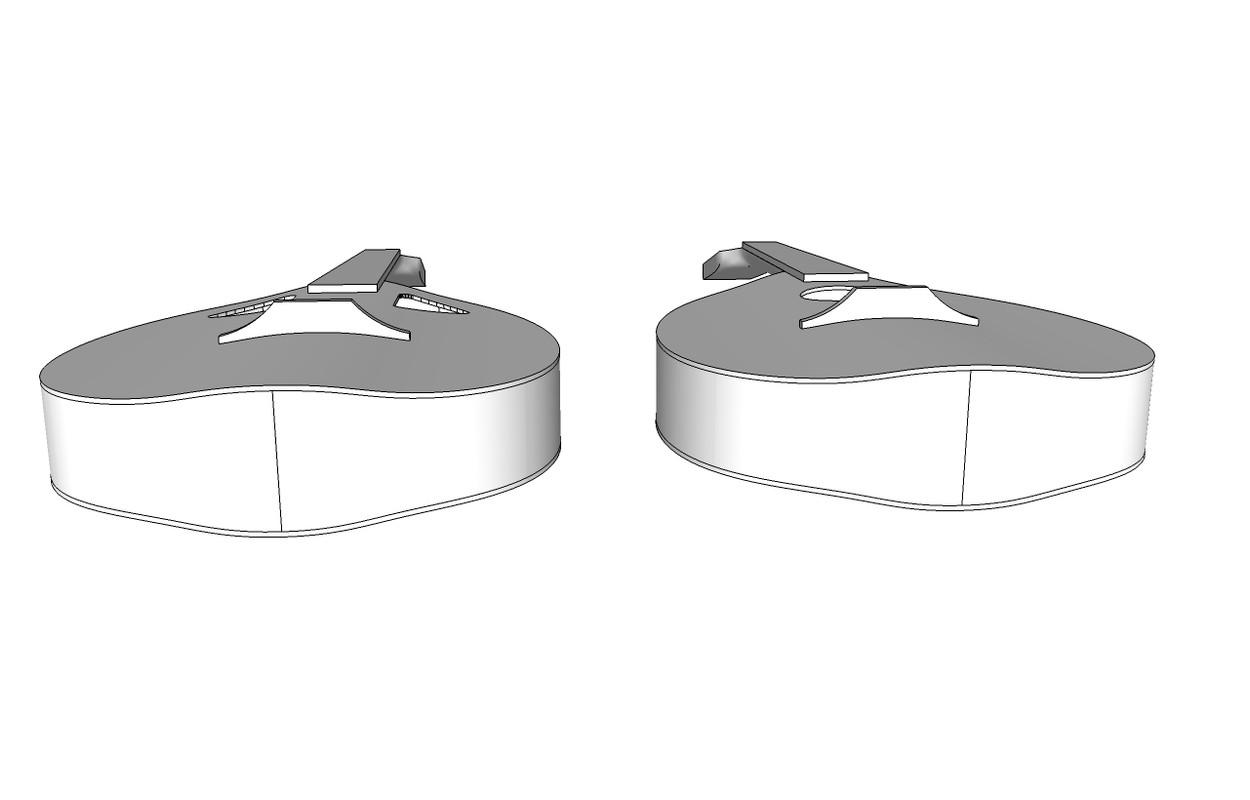
I'm still concidering two alternative tops - either I'll use a traditional centered round hole or I'll use two or more smaller sound holes placed off center. Not necessarily as on the picture but something in that direction.
The reason why I concider the version to the left is mainly structural: I want to try out the "double s" because it gives me the strength exactly were I need it - that is along the line were the strings try to bend the top and were the bridge tries to push it down, while the rest of the top hopefully can be left without so much tension and concentrate on vibrating and making good sound. It seems like a bad idea to cut a big hole just were I want the top to be the strongest. Lets just say that it's always a bad thing to make a big hole in a vault construction as it is the continuity of the vault that gives it its strength.
The reasons why I nevertheless might make it with a traditional sound hole is partly estetically and partly practically - I like the traditional look and I would very much like to have a bolt-on neck that I can remove and adjust which requires a hole in that position.
The bracing will be a little bit different depending on which version I choose, but the principles are the same: Ladder bracing combined with carbon fibre floating buttresses:
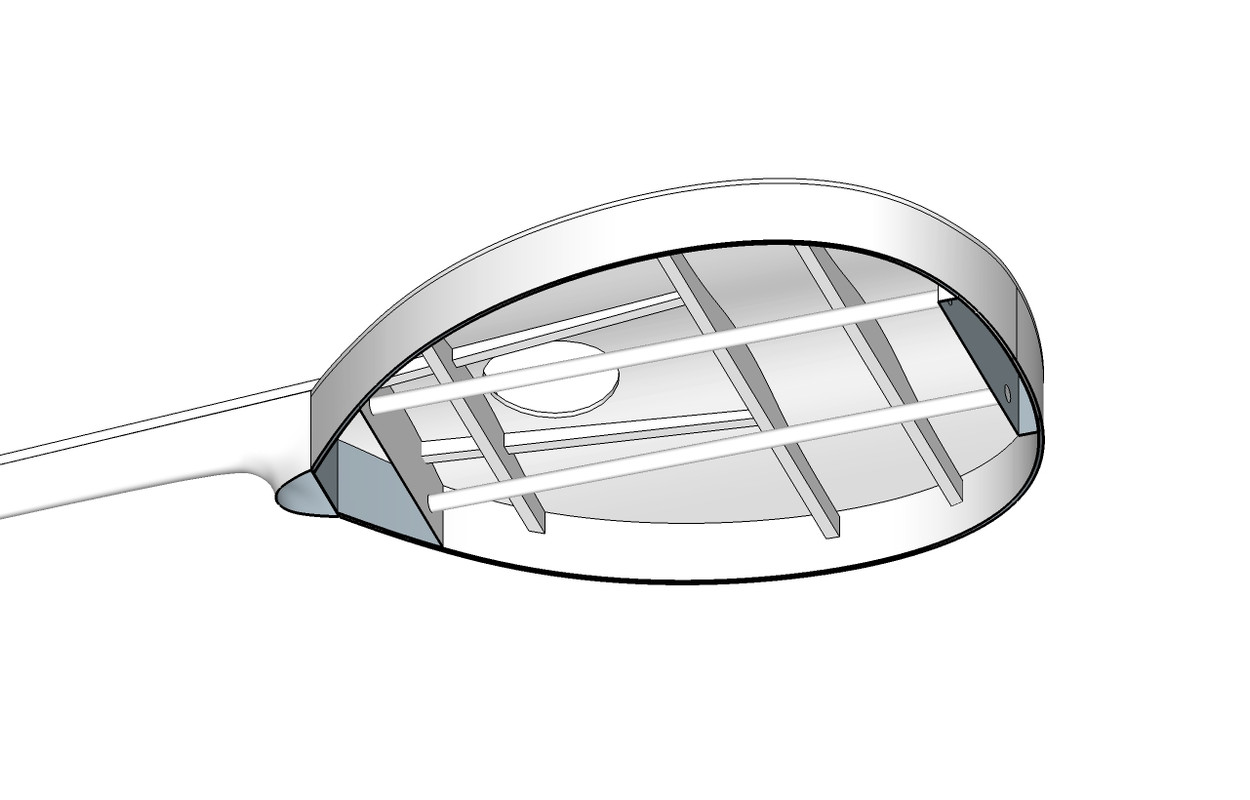
The round hole version has A-braces to strengthen the area around the sound hole.
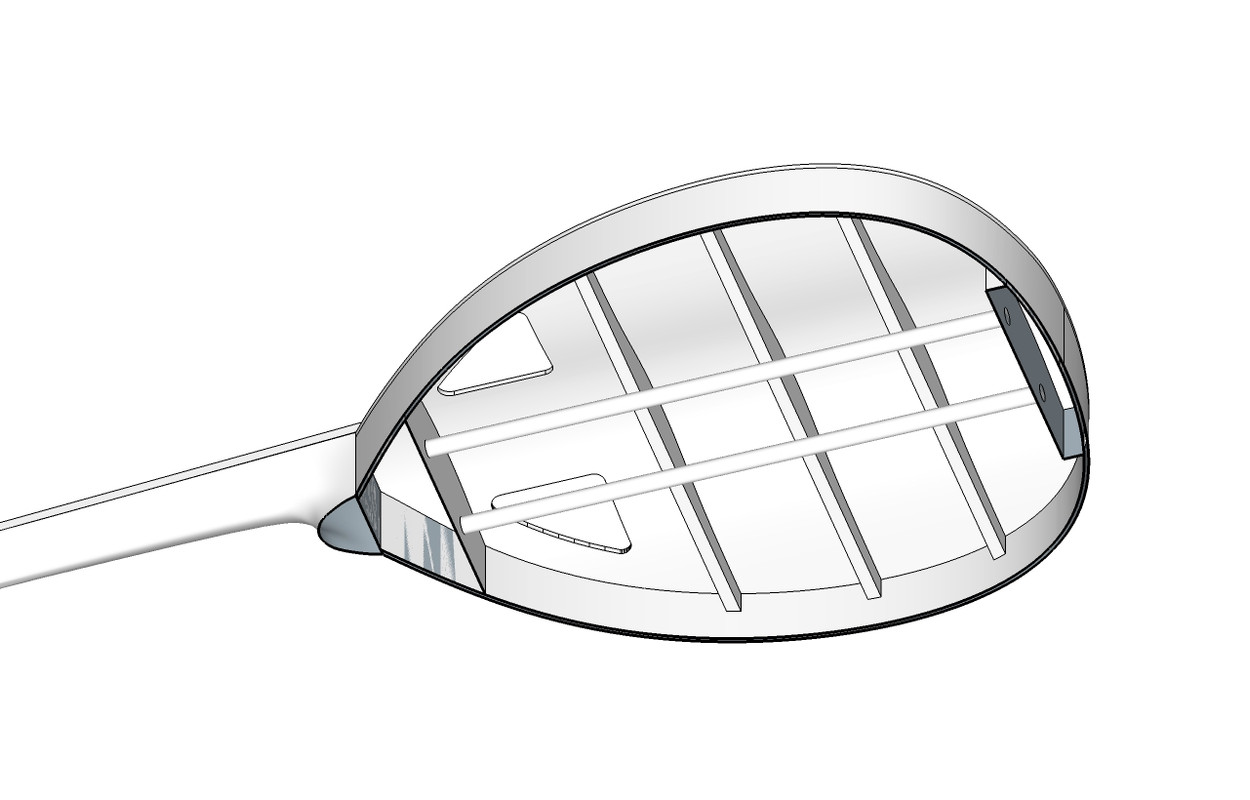
Here is a version of the side hole top with a pure ladder bracing. But I should probably put some longitudinal braces near the sound holes.
Some drawing views:

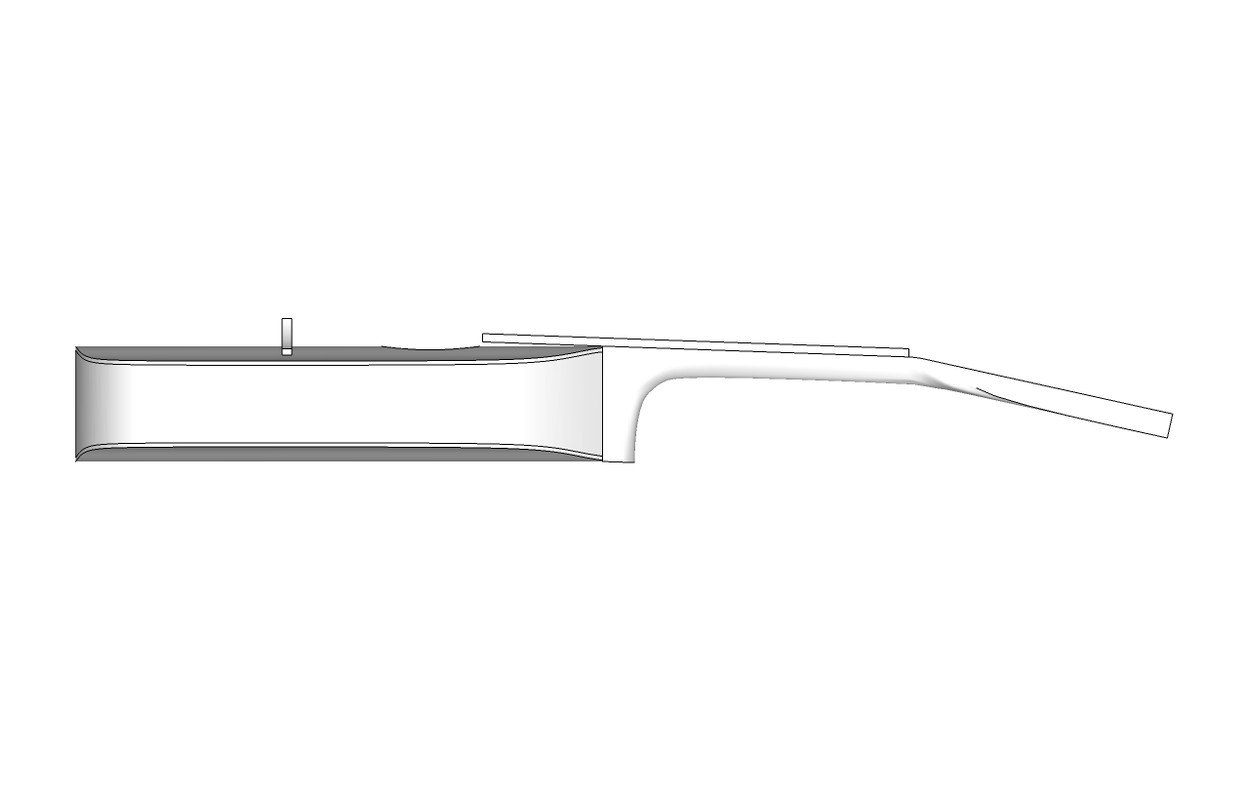
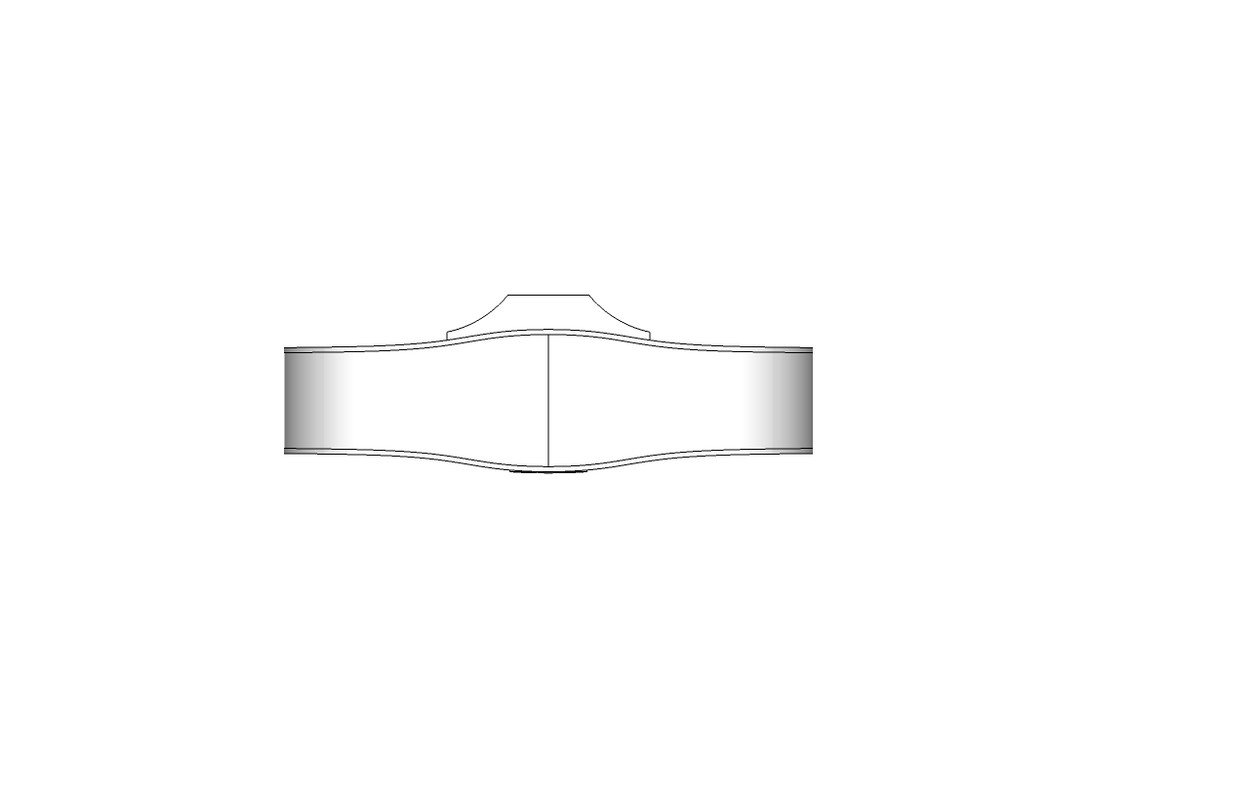
But the drawing is just a design aid - the final instrument will develop in the building process. I'd be very happy for any comments and suggestions
Tomorrow I'll sharpen my smoothing plane and start working on the top. But it will probably be a slow build as I have far too much work and too little time for this.
But I did my own research and found that many of these ideas with cylindrical tops, floating buttresses etc were partly invented by swedes emigrating to the USA at the end of the 19th century like the Larson brothers and the Vega founders. So I hope we can all agree that I'm just reclaiming my heritage :-)
"Double-S" is just my word for the "bulge" or "hump" that were on the Howe-Orme and early Vega guitars (and on R the F-s guitars of course). Traditionally they've been called "cylindrical" tops, but that's a strange thing to call it. My tenor mandola and many other instruments are true cylinder tops as they have a profile that is a part of a circle's circumference. But here we have a profile that is more like a double s-curve, hence the name.


I'm still concidering two alternative tops - either I'll use a traditional centered round hole or I'll use two or more smaller sound holes placed off center. Not necessarily as on the picture but something in that direction.
The reason why I concider the version to the left is mainly structural: I want to try out the "double s" because it gives me the strength exactly were I need it - that is along the line were the strings try to bend the top and were the bridge tries to push it down, while the rest of the top hopefully can be left without so much tension and concentrate on vibrating and making good sound. It seems like a bad idea to cut a big hole just were I want the top to be the strongest. Lets just say that it's always a bad thing to make a big hole in a vault construction as it is the continuity of the vault that gives it its strength.
The reasons why I nevertheless might make it with a traditional sound hole is partly estetically and partly practically - I like the traditional look and I would very much like to have a bolt-on neck that I can remove and adjust which requires a hole in that position.
The bracing will be a little bit different depending on which version I choose, but the principles are the same: Ladder bracing combined with carbon fibre floating buttresses:

The round hole version has A-braces to strengthen the area around the sound hole.

Here is a version of the side hole top with a pure ladder bracing. But I should probably put some longitudinal braces near the sound holes.
Some drawing views:



But the drawing is just a design aid - the final instrument will develop in the building process. I'd be very happy for any comments and suggestions
Tomorrow I'll sharpen my smoothing plane and start working on the top. But it will probably be a slow build as I have far too much work and too little time for this.


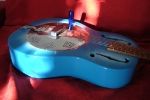

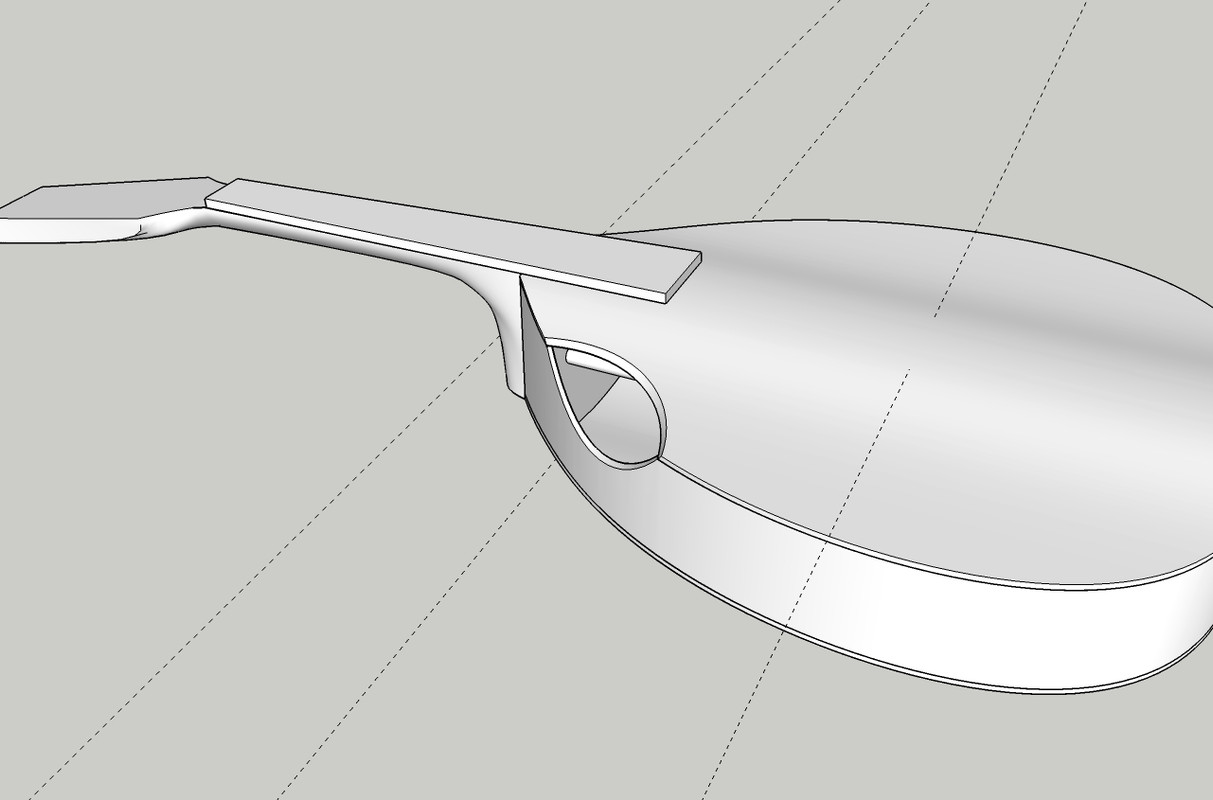
 Jo whoever he is.
Jo whoever he is.



